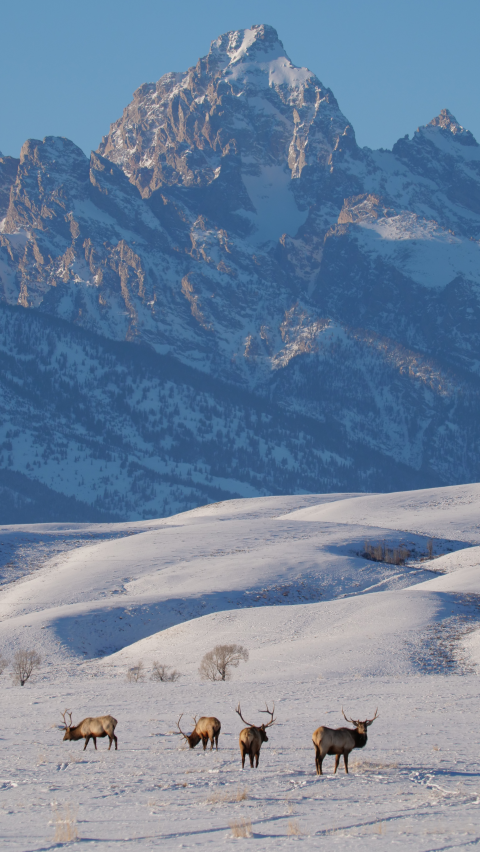
Sleigh Rides begin on December 20th and run through early April, conditions pending. To make reservations please call (307) 733-0277. For more information, visit the sleigh ride website.
Visit Us
We invite you to discover the 24,700+ acres of grasslands, wetlands, and forests conserved on the Refuge which support a diverse assembly of plants and animals. The Refuge is a premier location for wildlife watching and photography, as well as hunting, fishing, and educational opportunities. Through conservation efforts, the Refuge serves to benefit the people of today and future generations.
Plan Your Trip
- Are you visiting the National Elk Refuge in the winter? BOOK a winter sleigh ride!
- Looking for a narrated tour of the National Elk Refuge during your visit? Please follow the below links to listen to our available tours. Tours are currently available on Spotify.
Where Are The Elk?
Elk are typically visible on the Refuge from mid-December through early April. In late spring, elk begin migrating off the Refuge toward their summer ranges, following the receding snow line up to higher elevations in Grand Teton National Park and the Bridger Teton National Forest. From October through December, deepening snow cause the elk to seek food and shelter at lower elevations in Jackson Hole.
Location and Contact Information
What We Do
Wildlife conservation is at the heart of the National Wildlife Refuge System.
Projects and Research
Refuge staff lead and collaborate on many different research and monitoring projects that pertain to wildlife conservation.
SHORT-TERM EXTENSION OF STEP-DOWN PLAN
In 2019, the National Elk Refuge (Refuge) finalized a Bison and Elk Step-Down Plan (Step-Down Plan) that authorizes and provides management direction for bison and elk on the Refuge. The Step-Down Plan is set to expire at the end of the 2024. Currently, the U.S. Fish and Wildlife Service (Service) is continuing development of the draft Bison and Elk...




